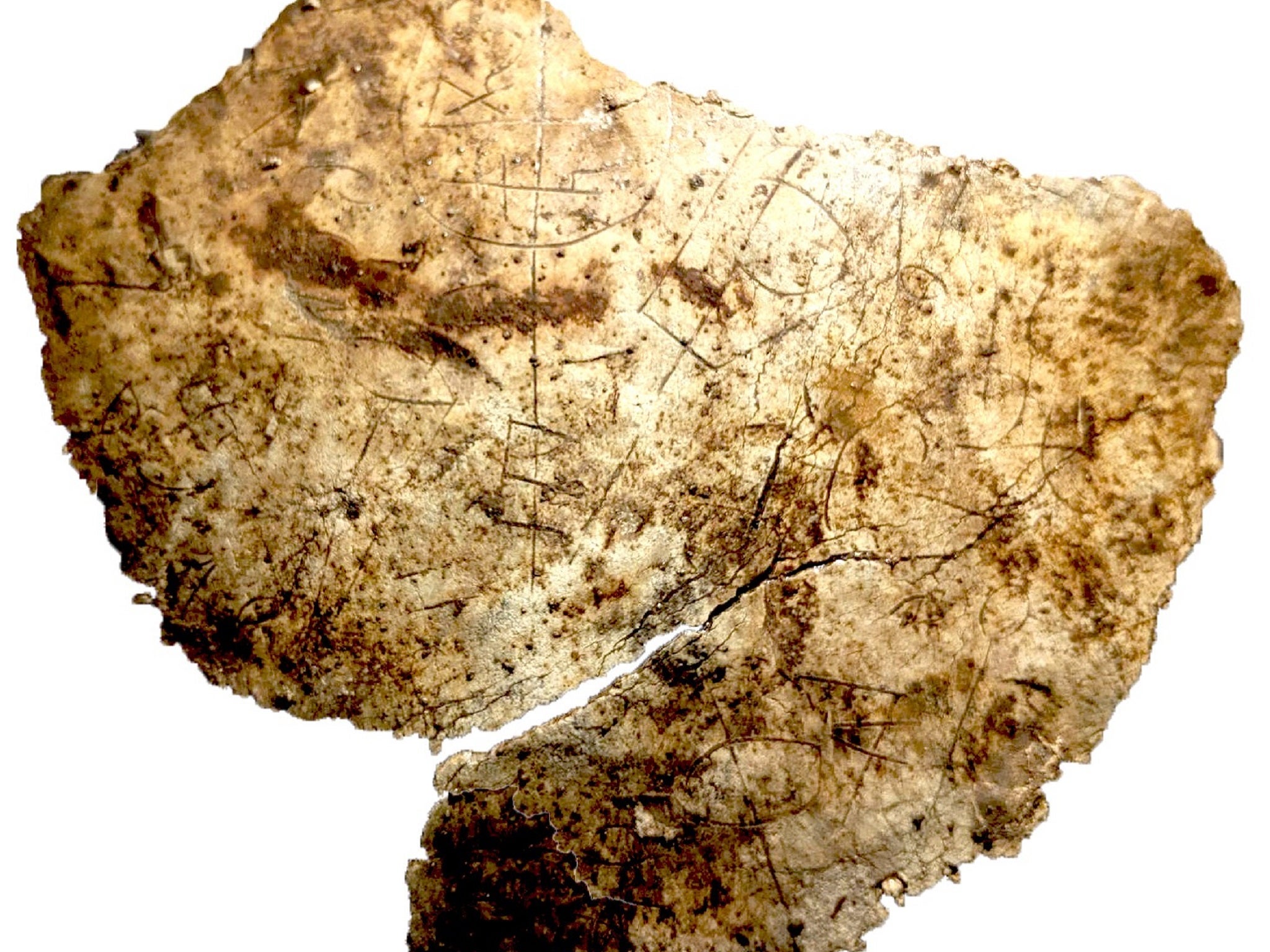Ancient Christian graffiti found on ‘one of a kind’ 5th-century chalice
Rare lead vessel covered in religious iconography discovered in ruins of Roman fort church

Archaeologists have unearthed a unique fifth-century chalice near Hadrian's Wall covered in Britain's earliest example of Christian graffiti on an object.
The lead vessel, the only known example of its kind from the period, was found in 14 fragments buried beneath the remains of a 5th or 6th century church during an archaeological dig at Vindolanda Roman fort in Northumberland.
Although in poor condition the pieces were found to be covered in well-known symbols from the early Christian church including ships, crosses and chi-rhos, fish, a whale, a happy bishop, angels, members of a congregation and letters in Latin, Greek and potentially Ogam.
This combination of etchings and the context of the discovery makes the artefact “one of a kind from this period of British, and indeed European, history”, according to Dr Andrew Birley, director of Vindolanda excavations.
He told The Independent: “So far, when we find etchings on stones in churches, or on mosaic floors, unless they are an integral part of the structure we have thought that they are ‘graffiti’ left by worshippers or the early Christian equivalent of Banksy – but this artefact changes the narrative quite a bit.
“The etchings are no random act, and a chalice is a holy Christian artefact. It is the only portable artefact from this period yet to have been found that is festooned with ‘graffiti’ or etchings.
“The symbols are a Christian code of sorts, mechanisms by which Christians could identify with and tell the stories to each other. Remember this is long before anything like the bible would have been commonly available.”
The markings are thought to have been added to both the outside and the inside of the cup by the same hand or artist and although they are now difficult to see with the naked eye, the symbols have been carefully recorded with the aid of specialist photography.
Dr Birley said chi-rhos (one of the earliest forms of the Christogram) and crosses can be clearly seen, as can a smiling priestly figure, angels, a whale and a fish which are all thought to be references to biblical tales such as Jesus’ feeding of the 5,000 and turning water into wine.
“The markings tell us a story about what was important to congregations almost 1,500 years ago and just after the fall of Roman Britain,” he added.
The church the chalice was found in had somehow collapsed, burying the artefact along with the building’s floor.
It is believed this would have helped protect both the chalice and the church from modern agriculture and theft.
What remains of the church suggests it was large enough to have held a congregation of 50 to 60 people.
Dr David Petts, from Durham University, who is leading the research into the chalice, said: “This is a really exciting find from a poorly understood period in the history of Britain.
“Its apparent connections with the early Christian church are incredibly important, and this curious vessel is unique in a British context.”
Vindolanda was first built by the Roman army before construction had even begun on the 73-mile-long Hadrian’s Wall to guard the wild north-west frontier of the Roman Empire.
It became an important construction and garrison base for the wall and was demolished and rebuilt at least nine times.
The archaeological team at Vindolanda have already unearthed artefacts such as ink tablets, boxing gloves, boots and shoes at the important site.
The chalice will be on show from Monday as part of a new exhibition at Vindolanda’s museum highlighting Christianity and the last periods of occupation on the site.
Subscribe to Independent Premium to bookmark this article
Want to bookmark your favourite articles and stories to read or reference later? Start your Independent Premium subscription today.

Join our commenting forum
Join thought-provoking conversations, follow other Independent readers and see their replies